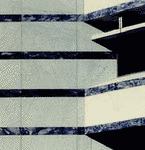banding
[′band·iŋ] (design engineering)
A strip of fabric which is used for bands. hydIn a glacier, a structure of alternate ice layers of different textures and appearance.
(petrology)
The series of layers occurring in a banded structure.
In sedimentary rocks, the thin bedding of alternate layers of different materials.
(science and technology)
A pattern of bands.
McGraw-Hill Dictionary of Scientific & Technical Terms, 6E, Copyright © 2003 by The McGraw-Hill Companies, Inc.
Banding
Illustrated Dictionary of Architecture Copyright © 2012, 2002, 1998 by The McGraw-Hill Companies, Inc. All rights reserved
banding
1. Wood edging for veneered doors or panels; normally used at the edge of plywood or coreboard constructions.
2. One or more decorative wood strips; decorative inlay.
3. Metal, plastic, or fiber straps to tie bundles together.
4. The strapping of the top of a timber pile to prevent its splitting while being driven.
McGraw-Hill Dictionary of Architecture and Construction. Copyright © 2003 by McGraw-Hill Companies, Inc.
banding
Unwanted lines (bands) in digital images. There are several causes, including the failure of algorithms to convert images correctly, the flickering of flurorescent lights when photos are taken and poor video conversion by the TV or disc player in real time. When taking photos of a TV or monitor, banding occurs when the frame rates of the screen and camera differ. See antibanding.Copyright © 1981-2025 by The Computer Language Company Inc. All Rights reserved. THIS DEFINITION IS FOR PERSONAL USE ONLY. All other reproduction is strictly prohibited without permission from the publisher.



